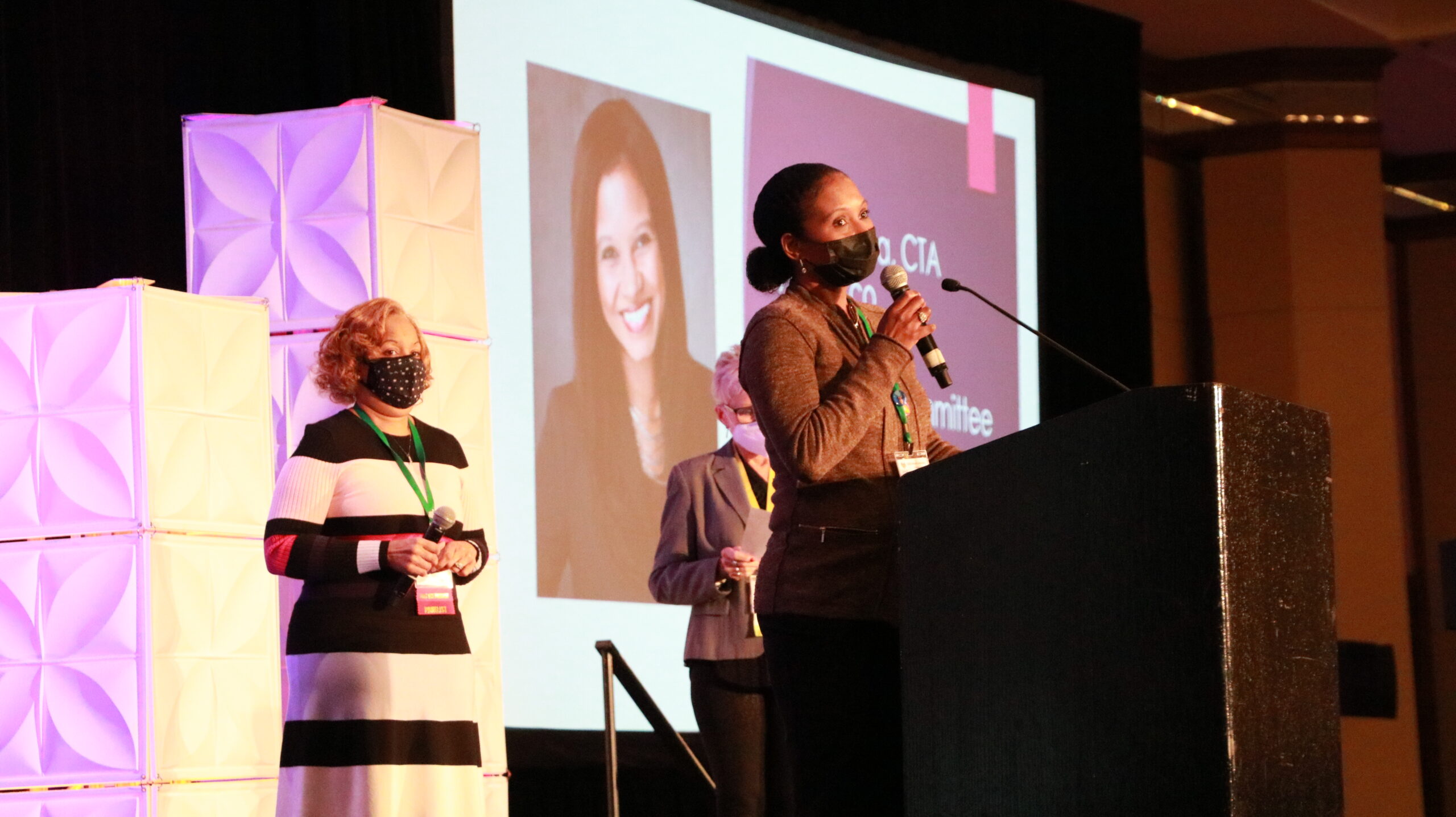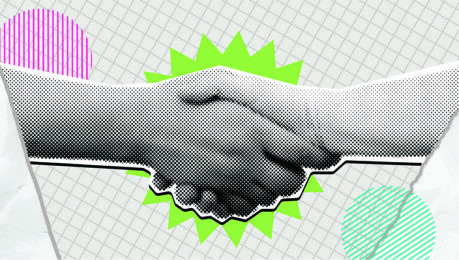There is no magic elixir to absolutely protect attendees from fast-spreading novel coronaviruses. But strategic measures executed professionally are a lot more effective than some of the most common solutions being promoted right now.
That is the real talk delivered by Robert Bronstein and John Harris, partners behind Prevent, a Lynchburg, Virginia, risk mitigation company created to help meeting professionals cross the unknown to return to meeting responsibly. What does work, they say, is layering safety measures based on the time, place and type of group. What doesn’t work might surprise you.
The pair sat down with Smart Meetings to talk about best practices for mitigation and what not to do.
Hot Topic
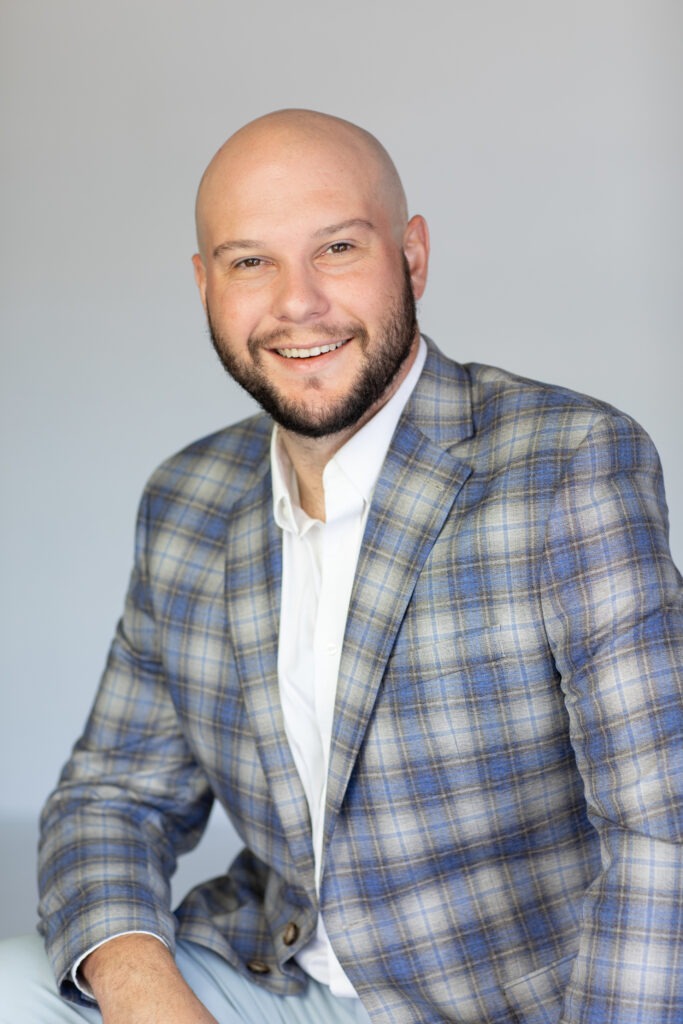
Top of the list of things seen frequently that don’t actually keep attendees safer: temperature reading guns. “A lot of the equipment out there is total B.S.,” said Bronstein.
That doesn’t mean he doesn’t recommend thermal screening as one of the layers of screening, but it has to be done correctly by trained personnel with FDA-approved camera systems that report accurately.
The tear duct is actually the most precise place to measure, he explained. The forehead is the least valid measurement and a lot of the guns pushed quickly into the market are not sensitive enough to give a meaningful reading.
Symptom and temperature screening also fall short in the face of asymptomatic people who can still spread the disease.
Bare-Faced Truths
Wearing N95 masks can protect attendees, Bronstein says, but only if they are worn continuously. “The reality is that people are getting tired of wearing masks,” he observed. And meeting professionals are often hesitant to take on the role of mask-police.
Still, Harris suggests distributing protective masks (branded ideally) as a way to stress the importance of following safety protocols.
Shot Limitations
Vaccinations were the step that was going to save F2F events at the beginning of 2021, but they have proven to be less than 100 percent effective, especially when events mix vaccinated and unvaccinated attendees. “Requiring vaccinations may have been fine the early days, but with so many breakthrough cases now, it is seen more as a measure to minimize symptoms,” Harris said.
While requiring boosters can help ensure attendees are as protected as possible, it can be a limiting factor on attendance, he cautioned.
Whatever the planner decides will be required, Harris stressed the importance of outsourcing the management of vaccine data collection, logging and screening for privacy reasons. Apps streamline the collection and verification of status while preserving medical privacy.
Testing, Testing
The most certain way to create a safe, productive space is testing, Bronstein said. Requiring testing on-site or prior to arrival through a PCR test layered with other measures such as cleaning, enhanced air filtration, masks and vaccines is the most sure-fire solution, he said.
Read More: Demystifying Covid Testing: The Differences, Access and What It All Means for Travelers
Long-Covid Effects
The pair started their company after their music careers were cut short by the flattening of the curve that required cancelling concerts. Now they are dedicated to helping events move forward regardless of what variant pops up next. “Just because Omicron is trending downward doesn’t mean it is time to let your guard down,” said Bronstein. “We have to continue to do the right thing.”
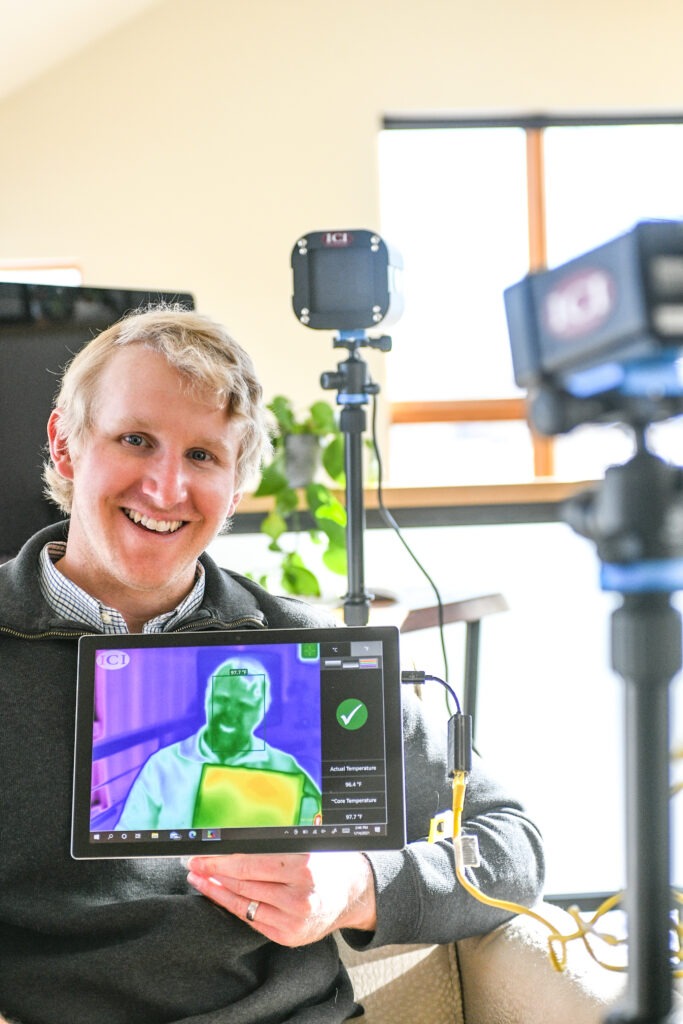
He compared safety measures now being put in place such as enhanced air filtration to the increased airport security that is still happening 20 years after the 9-11 attack.
“We have learned a lot of lessons,” said Harris. “We have learned how to protect people without shutting everything down. We have learned resiliency.”
One of the changes the pair hope will stick: The tolerance for people coming to work sick. “No more badge of honor for coming to the office coughing through the day,” Bronstein said.
Case Study in Safety
Event Service Professionals Association’s (ESPA) annual conference in January (seen in the first image) was billed as a model for what can be accomplished when a meeting professional organization produces its own event. A total of 162 individuals attended ESPA Annual Conference 2022 at Westin Kansas City at Crown Plaza in Kansas City, Missouri.
That was just over half the number who attended in 2020. Eleven registrants didn’t attend the event, a statistic categorized as due to organizer’s Covid precautions. After the event, one person reported a Covid infection a few days after the conference, meaning 99.4 percent of attendees didn’t report any subsequent illness.
How was this accomplished? Kenneth Hitchner, director of content strategy with CMA Solutions shared the protocols put in place.
Screening
ESPA required that all attendees show proof of Covid vaccination or negative PCR test performed within 72 hours of the conference using the CrowdPass app. Registrants were not allowed entry until these measured had been verified on site.
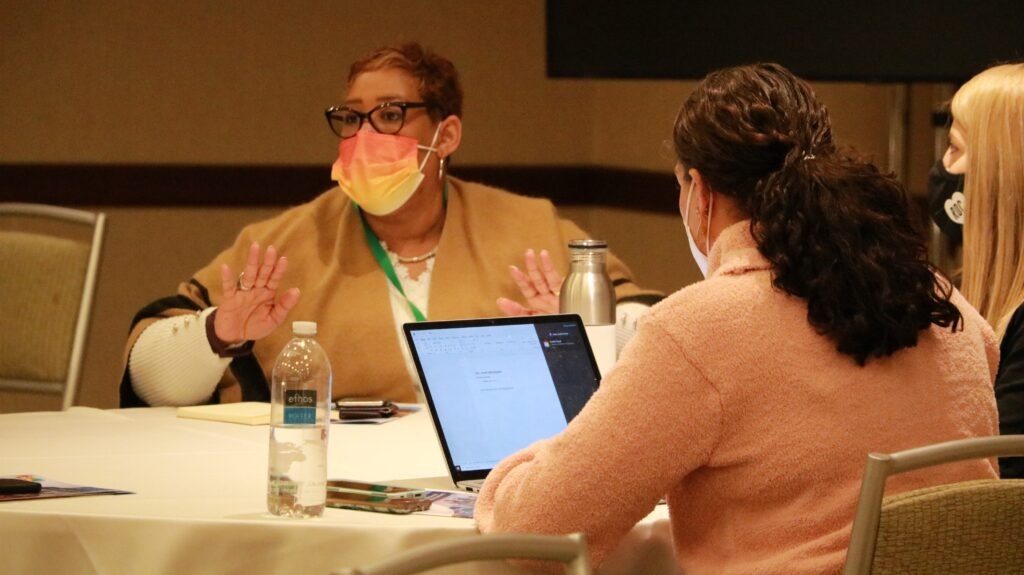
The app also facilitated advance health screening questions.
Suggested precautions included getting a vaccine booster for those who qualify and taking a rapid test prior to departure, even if fully vaccinated.
As part of ESPA’s registration process, all registrants were asked to agree to do their part and support and abide by established safety protocols. That included self-monitoring and if experiencing any Covid symptoms, to remove themselves from the event and notify ESPA staff.
A Culture of Safety
All attendees were required to wear a mask indoors, unless they were eating or drinking. N95 masks were available to all attendees.
Attendees had the option to choose Red/Yellow/Green lanyards to demonstrate their comfort factor while networking with fellow attendees. Red meant: “I’m keeping my distance”; Yellow translated as: “I’m being cautious, but I’m ok with talking and elbow bumps”; Green told fellow attendees: “I’m feeling ok with hugs and high fives.”
Read More: Navigating Comfort Levels: Third-party Planning in an Age in Flux
Similarly, a variety of seating options allowed attendees to choose the distancing option they were most comfortable with. Each session room offered one seat per 6-ft. table classroom seating as well as banquet rounds with four seats. The general session also offered theater seating spaced 3-ft. apart.
Hand sanitizer was available throughout the space as well as mini-bottle give-aways for all attendees. Signage encouraged respecting others’ space according to their lanyard color and reminders about wearing masks.
Disinfecting wipes were placed at all podiums so that microphones could be wiped by the incoming speaker prior to use.
The mobile app, Eventmobi, facilitated session questions for speakers through its Q&A feature, alleviating the need to pass microphones among attendees.
Covid-Era F&B
Food service considerations included breakfast served in individual bags with wrapped bagels or muffins, individually packaged fruit, yogurt and granola. Lunch was plated, served by attendants wearing N95 masks with tightly controlled exceptions.
Coffee breaks were set as individual grab-and-go, alleviating the need for crowding or lingering at stations and multiple people using serving spoons. Examples were individual glasses with smoothies, crudité, or apples with caramel sauce.
The host hotel followed Marriott’s Commitment to Clean protocols. Encore, the AV partner, followed their MeetSafe Guidelines for cleaning high-touch items.
